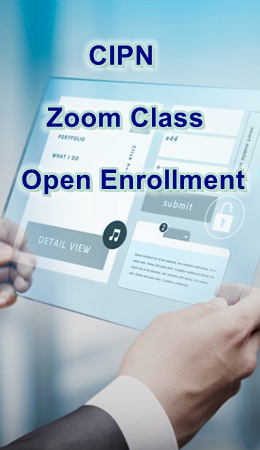Home > Certifications > Other Certifications > Certified Operational Business Accounting & Finance - Procurement (COBAF-P)
Certified Operational Business Accounting & Finance - Procurement (COBAF-P)
Certified Operational Business Accounting & Finance - Procurement (COBAF-P) certification program offers you a competitive edge, comprehensive knowledge that sets you apart, global recognition for your certification, practical insights from industry experts, and cross-functional skills that prepare you for higher-level positions. Seize this opportunity to advance your procurement career!
Program Objectives
As the economy rebounds, the demand for experienced procurement leaders with professional certifications is equally growing dramatically.
COBAF-P certification course is designed for current and future purchasing management professionals & and others looking to advance in supply chain management, reflecting levels of understanding and of competence needed to assume responsibility for managing purchasing operations at the international level.
Modules
Module 1
Lesson 1: Introduction and Overview
• Why are businesses in business?
• What are we employed to do?
• DuPont model
• Measuring ROI.
Lesson 2: Terms& Concepts
• 12 essential terms explained (Glossary extract)
• Accrual system and timing of profits
• Profit vs Cash
• Depreciation: the truth
• Mark-up and margin
Module 2
Lesson 3: Financial Reports
• Costs and expenses
• Assets and expenses
• Absorption costing and direct costing.
• Income statement & Balance sheet
• Efficiency from profits
• Liquidity from cash cycle
Lesson 4: Posting to ledgers
• The flow from decisions to reports.
• The general ledger: data warehouse of decisions
• Dual entry accounting: Debits & credits made easy.
• Transferring from ledgers to reports.
Module 3
Lesson 5: Cash Flow
• Purpose of the cash flow statement
• How to construct the statement
• Decisions impacting cash movement.
Lesson 6: Working Capital
• How we measure working capital.
• How we monitor working capital.
• Forecasting cash flow from improvements.
Module 4
Lesson 7: Measuring Supplier Financials – T&T
• Common size percentages.
• Index numbers
• Financial Ratios
• Adjusting for inflation
Lesson 8: Measuring Supplier Financials - Outcomes
• Profitability or efficiency.
• Financial health: liquidity & solvency
• Market performance.
Module 5
Lesson 9: Balanced Scorecard
• How to use a balanced scorecard in managing for-results environment.
• How a scorecard system can help align organization effort with strategy
• How to overcome obstacles and challenges.
Lesson 10: Capital Budgeting
• Inputs to capital budgeting
• Time value of money
• NPV, IRR and Payback
Module 6
Lesson 11: Cost Estimating
• Determining estimating factors
• Relationship between dependent and independent variables
• Preparing the CER equation
Lesson 12: Cost Reduction.
• Bottom-up accounting.
• Identify Hidden costs.
• Managing Cost increases and unexpected costs
Lesson 13: Cost Volume Profit Analysis.
• Types of cost
• Algebraic analysis of costs
• Graphic analysis of cost
• Calculating fixed cost element
• Developing an estimating equation
Module 7
Lesson 14: Price and Cost Analysis
• Describe the primary cost estimating methods.
• Know the 12 steps of GAO’s High-Quality Cost Estimating Process.
• Identify sources of major risk in developing cost estimates
• Contract pricing strategies
• Fixed-Price, Cost Reimbursement, and “Hybrid” Pricing Arrangements
• Cost Analysis Tools and Techniques
• Profit Analysis Tools and Techniques
Module 8
Lesson 15: Make or Buy
• Describe the in sourcing / outsourcing decision.
• Provide a process for making these decisions.
• Triggers prompting decision process.
• Pros and cons of In sourcing and outsourcing
• Transformational outsourcing
Lesson 16: Price Index Analysis.
• Calculate indexes for the periods relative to the base year.
• Determine inflation between two periods.
• Calculate ratios.
• Calculating price adjustments.
• How to use indexes in price negotiations.
Lesson 17: Total landed cost.
• Various charges to be considered.
• Unpacking Incoterms.
• Calculating CIF charges.
• Hedging strategies
• Types of tariffs.
Examination
To get certified, students will need to pass a 3-hour examination after training.
Admission Eligibility
• Minimum of 3 years work experience in procurement/ supply chain.
• Associate Level Degree or above.
Certifications
- Certified International Commercial Contracts Manager (CICCM)
- Certified International Professional Negotiator (CIPN)
- Certified International Trade, Shipping & Logistics Professional(CITLP)
- Certified International Sourcing Manager (CISM)
- Certified International Warehouse and Inventory Manager (CIWIM)
- Certified Supplier Quality Manager (CSQM)
- Certified Manager of Production Operation (CMPO)
- Certified International Contract Cost/Price Analyst (CICCPA)
- Project Management Professional in Procurement and Contracting (PMPPC)
- Certified International Procurement Auditor (CIPA)
- Certified International Category Manager (CICM)
- Certified in Artificial Intelligence in Procurement and Supply Chain Management (CAIPSCM)
- Certified Operational Business Accounting & Finance - Procurement (COBAF-P)




